Ganesh Chaturthi, one of the most popular Hindu festivals, is dedicated to Lord Ganesha, the god of wisdom, prosperity, and new beginnings. In 2024, Ganesh Chaturthi will be celebrated with great fervor and devotion across India, especially in Maharashtra. This vibrant festival marks the birth of Lord Ganesha and spans over ten days of prayer, feasting, and cultural activities. Let’s explore the significance of Ganesh Chaturthi and how to celebrate this grand festival with devotion and joy.
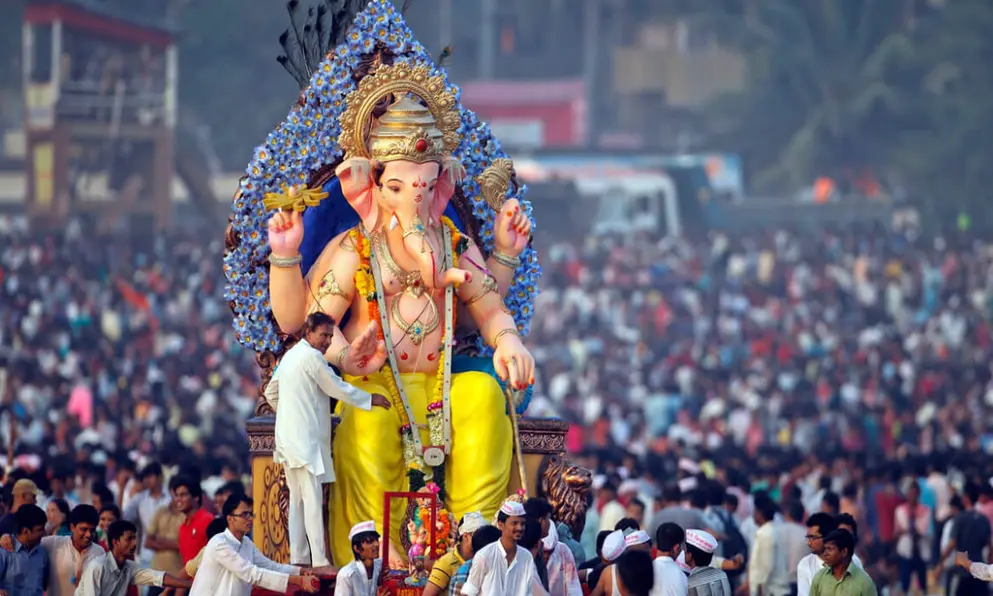
Why We Celebrate Ganesh Chaturthi
Ganesh Chaturthi, also known as Vinayaka Chaturthi, is celebrated to honor the birth of Lord Ganesha, the son of Lord Shiva and Goddess Parvati. According to Hindu mythology, Ganesha is revered as the remover of obstacles and the god of new beginnings. The festival celebrates his wisdom, power, and ability to bless his devotees with success.
- Mythological Significance: The story behind Ganesh Chaturthi stems from various legends. One popular tale is that Goddess Parvati created Ganesha from sandalwood paste and breathed life into him. Ganesha was instructed to guard her while she bathed, but when Lord Shiva attempted to enter, Ganesha, unaware of his father’s identity, stopped him. In a fit of rage, Shiva beheaded Ganesha. To console the grieving Parvati, Shiva replaced Ganesha’s head with that of an elephant, bringing him back to life. This act symbolized Ganesha’s rebirth as the god of wisdom and success.
- Cultural Significance: Beyond mythology, Ganesh Chaturthi holds cultural importance as a time for communities to come together. The festival fosters a sense of unity and togetherness, as families and neighborhoods celebrate together. It’s also a time to reflect on personal growth and seek Ganesha’s blessings for overcoming obstacles in life.
Top 5 Famous Ganesh Temples In India
India is home to numerous famous Ganesh temples that attract millions of devotees. Here is a list of some of the most famous Ganesh temples in India:
1 Siddhivinayak Temple, Mumbai
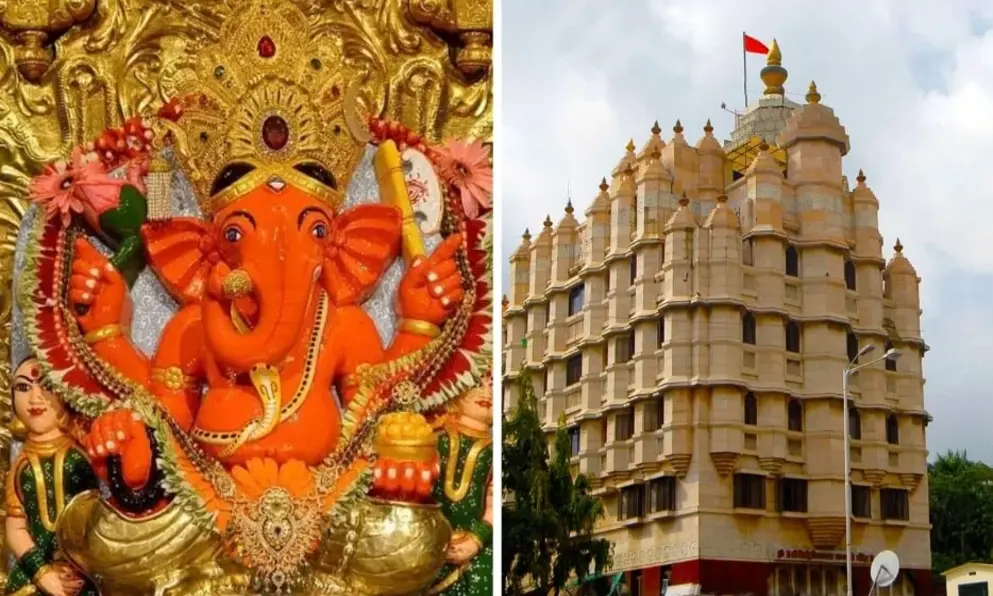
Siddhivinayak Temple, located in Mumbai, Maharashtra, is one of the most revered and popular Hindu temples dedicated to Lord Ganesha. Built in 1801, the temple attracts thousands of devotees and tourists daily. The temple is known for its beautiful architecture, including a gold-plated dome and intricately carved wooden doors. Lord Ganesha, also known as Siddhivinayak or the deity who grants wishes, is worshipped here, especially during the Ganesh Chaturthi festival.
The temple is situated in the Prabhadevi area of Mumbai and has a long-standing cultural and spiritual significance for people in the city and across India.
Click here for the location map
2 Dagdusheth Halwai Ganpati Temple, Pune

The Dagdusheth Halwai Ganpati Temple is a revered Hindu shrine located in Pune, Maharashtra. Renowned for its grandeur and significance, this temple is dedicated to Lord Ganesha, the elephant-headed deity known as the remover of obstacles and the harbinger of prosperity.
The temple was established in 1893 by Dagdusheth Halwai, a successful sweet maker and a prominent philanthropist. Dagdusheth, deeply devoted to Lord Ganesha, built the temple as a gesture of gratitude and devotion. Over time, the temple has become a prominent religious and cultural landmark in Pune.
The temple is particularly famous for its grand celebration of Ganesh Chaturthi, an annual festival dedicated to Lord Ganesha. During this time, the temple is exquisitely decorated, and thousands of devotees flock to the temple to seek blessings. The celebrations are marked by vibrant processions, devotional music, and various cultural performances, creating a festive and spiritually charged atmosphere.
Click here for the location map
3 Ganpatipule Temple, Ratnagiri
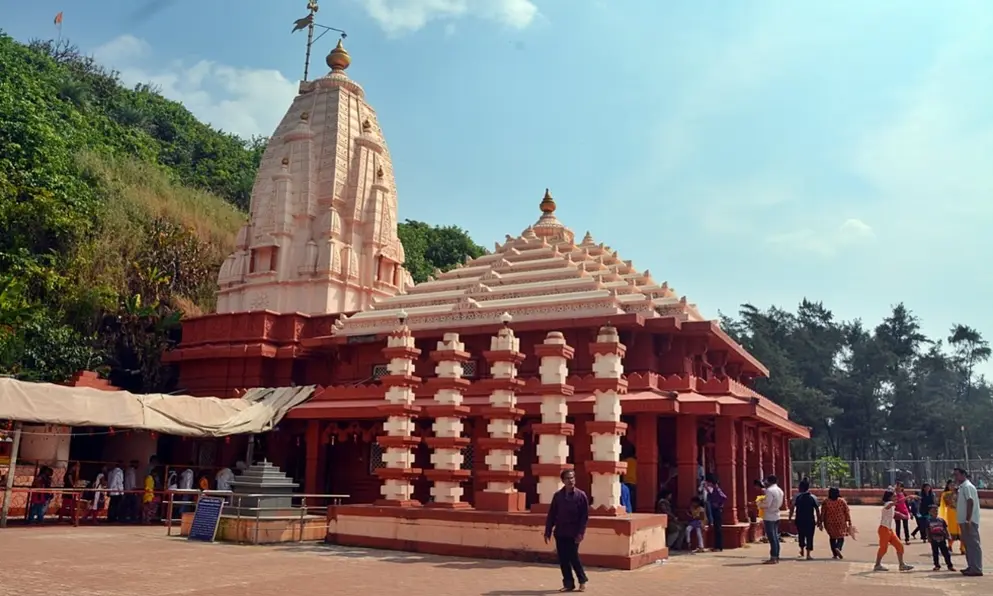
Ganpatipule Temple, located in Ratnagiri, Maharashtra, is a renowned Hindu temple dedicated to Lord Ganesha, one of the most revered deities in Hinduism. Situated on the Konkan coast, the temple is nestled in a scenic location overlooking the Arabian Sea, adding to its spiritual and natural allure.
Ganpatipule Temple is famous for its ancient idol of Lord Ganesha, which is believed to be self-manifested (Swayambhu). The temple’s history dates back several centuries, with many legends attributing its origins to the time of the Pandavas or even earlier. The idol of Ganapati here is depicted with a trunk facing to the right, which is considered to be highly auspicious in Hindu belief.
Ganpatipule is well-connected by road and rail. The nearest major city is Ratnagiri, which is approximately 25 kilometers away. Visitors can reach Ratnagiri by train or bus from various parts of Maharashtra and then take a short drive to Ganpatipule. The nearest airport is in Ratnagiri, with limited connectivity, so travelers might prefer flying to Mumbai or Goa and then traveling by road.
Click here for the location map
4 Ashtavinayak Temples
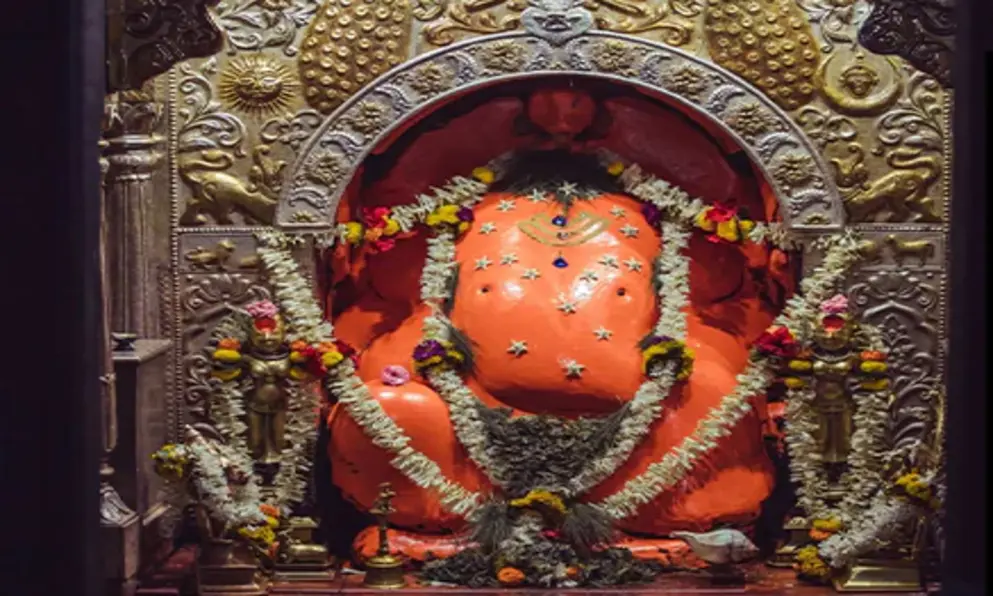
The Ashtavinayak Temples in Maharashtra are a revered cluster of eight Hindu temples dedicated to Lord Ganesha, the elephant-headed deity. The term “Ashtavinayak” translates to “Eight Ganeshas,” and these temples are a major pilgrimage site for devotees of Ganesh.
The Ashtavinayak Yatra, or pilgrimage, is a spiritual journey that involves visiting all eight temples in a specific order. Devotees believe that completing this pilgrimage brings blessings and removes obstacles from their lives. Each temple holds unique significance and contributes to the overall spiritual journey.
The Ashtavinayak Temples are not just religious sites but also embody the rich cultural and architectural heritage of Maharashtra. The temples are celebrated for their historical significance, diverse architectural styles, and the deep devotion they inspire among pilgrims.
The best time to visit the Ashtavinayak temples is during the winter months, from October to March, when the weather is pleasant.
Click here for the location map
5 Kanipakam Vinayaka Temple, Chittoor
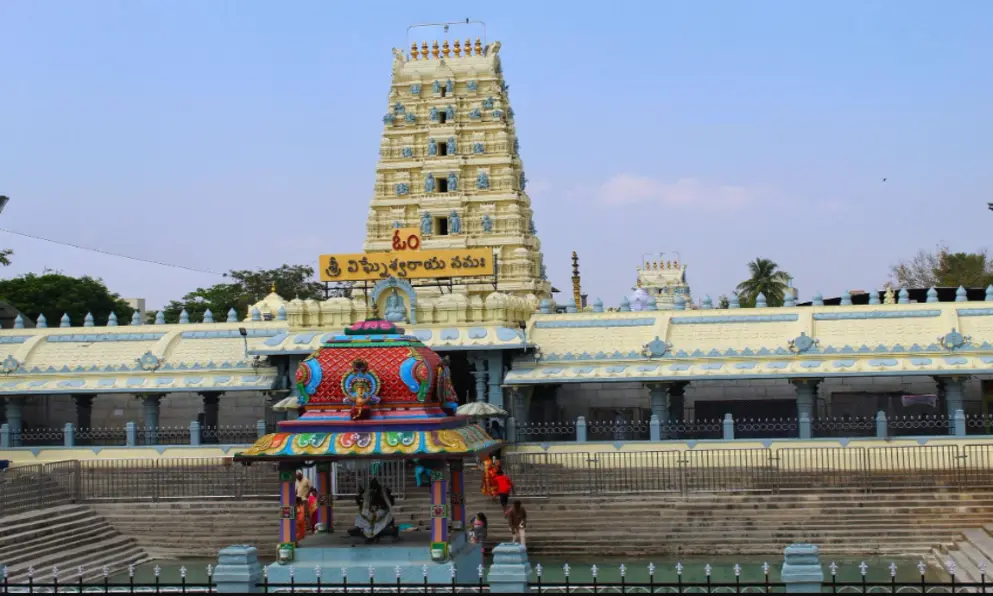
Nestled in the Chittoor district of Andhra Pradesh, the Kanipakam Vinayaka Temple stands as a significant pilgrimage site, revered for its divine atmosphere and rich history. Dedicated to Lord Ganesha, the temple is renowned for its ancient idol and the unique story behind its origins.
The Kanipakam Vinayaka Temple is believed to have been established during the Chola dynasty, with its origins dating back several centuries. The temple is famous for its self-manifested (Swayambhu) idol of Lord Ganesha, which is said to have emerged from the earth. This miraculous event has drawn devotees from across the country, seeking blessings and solace.
The architecture of the Kanipakam Vinayaka Temple reflects traditional South Indian temple design, characterized by its intricately carved pillars and vibrant sculptures. The temple complex includes a sanctum sanctorum, where the main idol of Lord Ganesha is enshrined, as well as several other shrines dedicated to various deities.
The main deity, Lord Vinayaka (Ganesha), is depicted with a unique form. Unlike typical representations, the idol here is semi-immersed in water, which is believed to have miraculous powers. The continuous flow of water from an underground spring adds to the temple’s sanctity and is a major attraction for devotees.
The temple is located approximately 75 kilometers from Tirupati and is easily accessible by road. It is open to visitors throughout the week, with specific timings for various rituals and poojas. The serene surroundings and the spiritual atmosphere make it a worthwhile destination for those seeking both religious and cultural experiences.
Click here for the location map
How to Celebrate Ganesh Chaturthi
Ganesh Chaturthi celebrations can vary depending on region, tradition, and personal preferences, but the essence of devotion and joy remains the same everywhere. Here are some key ways to celebrate Ganesh Chaturthi in 2024:
- Bringing Ganesha Home: Devotees bring beautifully crafted Ganesha idols into their homes or community pandals (temporary stages) with great pomp and show. The installation of the idol is accompanied by chants of “Ganpati Bappa Morya” and the offering of sweets like modak, which is believed to be Ganesha’s favorite food.
- Performing Rituals (Puja): Daily prayers and rituals are performed during the festival. The most important of these is the Ganesh Aarti, a devotional song sung to honor Ganesha. Offerings of flowers, incense, and sweets are made to the idol, and devotees recite mantras to seek Ganesha’s blessings.
- Community Celebrations: In many parts of India, especially in Maharashtra, large-scale celebrations are organized by communities. Huge Ganesha idols are installed in public places, and cultural programs, music, and dance performances are held. People come together to celebrate and participate in these events, fostering a spirit of camaraderie.
- Eco-Friendly Celebrations: In recent years, there has been a growing emphasis on celebrating Ganesh Chaturthi in an eco-friendly manner. Instead of using plaster of Paris idols that harm the environment when immersed in water, many devotees opt for eco-friendly clay idols. These dissolve easily in water and do not pollute rivers and lakes.
- Visarjan (Immersion): The festival culminates with the immersion of the Ganesha idol in a body of water, symbolizing Ganesha’s return to his celestial abode. The visarjan is a grand procession with music, dancing, and chanting. While it marks the end of the festival, it is also a moment of hope, as devotees eagerly await Ganesha’s return the following year.
Tips for Celebrating Ganesh Chaturthi 2024
- Preparation: Start preparing for the festival in advance by choosing a suitable Ganesha idol, gathering the necessary materials for puja, and planning your celebrations. Consider going green by selecting an eco-friendly idol and biodegradable decorations.
- Involve the Family: Ganesh Chaturthi is a family-oriented festival. Involve all family members in the rituals, from decorating the altar to preparing traditional sweets like modaks and laddoos. This not only strengthens family bonds but also passes down traditions to the younger generation.
- Community Involvement: If you celebrate Ganesh Chaturthi in a public setting, consider participating in community events. Volunteer for tasks like organizing the puja or helping with the visarjan. Community involvement adds a special dimension to the festival and brings people closer together.
- Mindful Celebrations: As you celebrate, be mindful of the environment. Use natural materials for decorations, avoid plastic, and ensure that any waste generated during the festival is disposed of responsibly. Celebrating responsibly ensures that the festival remains a source of joy for generations to come.
Conclusion
Ganesh Chaturthi 2024 promises to be a time of devotion, celebration, and joy. Whether celebrated at home with family or in a large community gathering, the festival offers an opportunity to seek the blessings of Lord Ganesha and start new ventures with a positive mindset. By embracing eco-friendly practices and mindful celebrations, devotees can ensure that Ganesh Chaturthi remains a vibrant and meaningful festival that honors both tradition and the environment.
Frequently Asked Questions
This lively festival, dedicated to Lord Ganesha, spans ten days filled with rituals and celebrations throughout India. People place idols of Lord Ganesha in their homes and temples, offering daily prayers and worship. The festivities culminate on the tenth day with the immersion of these idols in rivers, lakes, or seas.
On the final day of Ganesh Chaturthi, it is said that Lord Ganesha returns to Mount Kailash to be with his parents, Lord Shiva and Goddess Parvati. Ganesh Chaturthi, also known as Vinayaka Chaturthi, is a major Hindu festival celebrating the birth of Lord Ganesha.
Ganesh Chaturthi is one of the most popular Hindu festivals in India, celebrated with great enthusiasm. While it is widely observed across the country, it holds special significance in the southern regions, particularly in Maharashtra. The tradition of performing Ganesha Puja during midday stems from the belief that Lord Ganesha was born at that time of day.
Lokmanya Bal Gangadhar Tilak introduced a novel idea by moving the Ganeshotsav celebration from the confines of private homes to public spaces, with the belief that it would unite people and promote a sense of community. In 1893, Tilak set the foundation for this public festival.
In Nepal, Ganesh Chaturthi is observed by the Newar community. The festival begins with placing Ganesh idols in beautifully adorned homes and temporary structures called pandals or mantapas, which are set up in various neighborhoods.
Ganesh Chaturthi, celebrating the birth of Lord Ganesha, will be observed on September 7, 2024.
This festival celebrates the birth of Lord Ganpati. Devotees bring home Ganesh Ji’s idol and keep it for varying durations, such as 1.5 days, 3 days, 5 days, 7 days, 9 days, or 11 days. After worshipping Ganesh Ji throughout this period, the idol is immersed in water on Anant Chaturdashi, marking the end of the celebration.
The immersion (Visarjan) symbolizes the cycle of creation and dissolution. It represents the belief that Lord Ganesha comes to the earth and then returns to his celestial abode, taking away the devotees’ troubles and obstacles.

